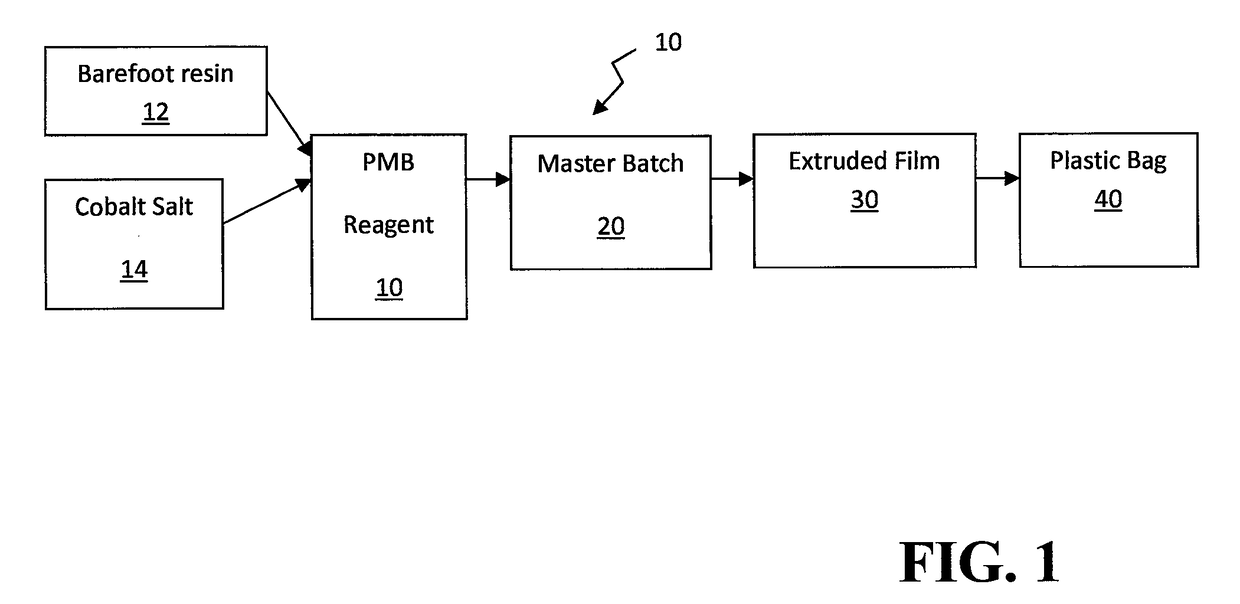Plastic reagent and process
a technology of plastic reagents and resins, applied in the field of resin blends, reagents, additives, etc., can solve the problems of poor clarity, low strength films, and high cost of disposable products such as merchandise bags or disposable plates used in fast food restaurants, and achieves rapid oxidation, accelerate degradation, and reduce cost
- Summary
- Abstract
- Description
- Claims
- Application Information
AI Technical Summary
Benefits of technology
Problems solved by technology
Method used
Image
Examples
Embodiment Construction
A. Description of the Preferred Embodiment(s)
[0043]In Table 1 of the present invention, three variations on degradability are shown representing three typical plastic products and their desired degradability. Batches 1, 2, and 3 are pre-mixed batches consisting of a typical barefoot polyethylene resin and Cobalt salt. These pre-mixed batches (PMB) represent three variations of the reagents of the present invention. Each batch 1, 2, and 3 are essentially time bombs that will trigger degradability when mixed into their respective master batches, which in turn, each master batch is extruded, molded, or converted into a plastic product.
[0044]In Table 1, the PMB reagent 1 of the present invention is added at a 10% rate to the master batch and triggers a desired degradable effect for a HDPE plastic grocery sack to degrade in 2 years. Typically a disposable product such as a plastic sack, a Styrofoam container, or polyethylene glove is discarded into the trash, whereas a relatively short-t...
PUM
| Property | Measurement | Unit |
|---|---|---|
| mixture algorithm | aaaaa | aaaaa |
| strength | aaaaa | aaaaa |
| strength properties | aaaaa | aaaaa |
Abstract
Description
Claims
Application Information
 Login to View More
Login to View More - R&D
- Intellectual Property
- Life Sciences
- Materials
- Tech Scout
- Unparalleled Data Quality
- Higher Quality Content
- 60% Fewer Hallucinations
Browse by: Latest US Patents, China's latest patents, Technical Efficacy Thesaurus, Application Domain, Technology Topic, Popular Technical Reports.
© 2025 PatSnap. All rights reserved.Legal|Privacy policy|Modern Slavery Act Transparency Statement|Sitemap|About US| Contact US: help@patsnap.com


